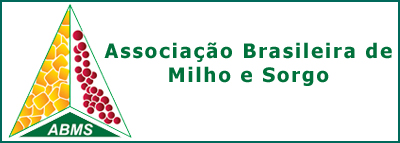LEVANTAMENTO FITOSSOCIOLÓGICO DE PLANTAS DANINHAS NA CULTURA DO SORGO GRANÍFERO EM FUNÇÃO DO MANEJO QUÍMICO
DOI:
https://doi.org/10.18512/1980-6477/rbms.v18n1p148-157Keywords:
Sorghum bicolor, BRS 332, fitossociologiaAbstract
RESUMO – O objetivo do trabalho foi identificar as plantas daninhas presentes no final do ciclo da cultura do sorgo,
após controle químico. O experimento foi conduzido em campo, em delineamento experimental de blocos casualizados,
com 23 tratamentos e 3 repetições. Os tratamentos foram aplicações de glyphosate + 2,4-D (1.500 + 1.000 g ha-1)
isoladas aos 28, 21 e 7 dias antes da semeadura, e/ou associadas com atrazine + paraquat (1.000 + 300 g ha-1) no dia
da semeadura, e/ou atrazine (1.000 g ha-1) isolada ou sequencial em pós-emergência inicial e tardia; um tratamento
adicional com atrazine + glyphosate (1.000 + 1.500 g ha-1) no dia da semeadura, e duas testemunhas (capinada e sem
capina). O estudo fitossociológico foi realizado na pré-colheita do sorgo. As plantas daninhas foram identificadas e
quantificadas pelo método do quadrado inventário (0,25 m²), e foram analisados os parâmetros frequência, densidade e
abundância, absolutas e relativas, e o índice de valor de importância (IVI). A dessecação aos 28 dias antes da semeadura,
associada à aplicação no dia do plantio com herbicidas de contato e residual, somado de aplicações em pós-emergência
inicial e tardia, reduziu a frequência, a densidade e a abundância das espécies.
Palavras-chave: Sorghum bicolor, BRS 332, fitossociologia, controle.
PHYTOSOCIOLOGICAL SURVEY OF WEEDS
IN GRAIN SORGHUM IN THE FUNCTION OF CHEMICAL MANAGEMENT
ABSTRACT – The objective of this work was to identify the weeds present at the end of the crop cycle of sorghum
after chemical control. The experiment was conducted in a randomized complete block design with 23 treatments and
three replicates. The treatments were glyphosate + 2,4-D (1500 + 1000 g ha-1), isolated at 28, 21 and 7 days before
sowing; and/or atrazine + paraquat (1000 + 300 g ha-1) on the day of sowing, and/or atrazine (1000 g ha-1) isolated
or sequential in early and late post-emergence; an additional treatment with atrazine + glyphosate (1000 + 1500 g
ha-1) on the day of sowing, and two controls (weeded and no weed). The phytosociological study was carried out in
the pre-harvest of sorghum. Weeds were identified and quantified using the square inventory method (0.25 m²); and
the parameters frequency, density and abundance (absolute and relative), and the importance value index (IVI) were
Analyzed. The desiccation at 28 days before sowing, associated to the application on the day of planting with contact
and residual herbicides, plus initial and late post-emergence applications reduced the frequency, density and abundance
of the species.
Keywords: Sorghum bicolor, BRS 332, phytosociology, control.
Downloads
Published
How to Cite
Issue
Section
License
Authors retain copyright and grant the journal right of first publication with the work simultaneously licensed under the Creative Commons Attribution License that allows the sharing of work and recognition of the work of authorship and initial publication in this journal.
Authors are able to take on additional contracts separately for non-exclusive distribution of the version of the paper published in this journal (eg, in an institutional repository or publish as a book), with acknowledgment of its initial publication in this journal.
Authors are permitted and encouraged to post their work online (eg, in institutional repositories or on their website) at any point before or during the editorial process, as this may leadto productive exchanges, as well as increase the impact and citation of published work.



